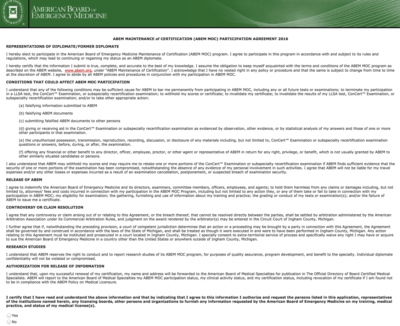I was pleased when I opened my mailbox today, and the new Academic Emergency Medicine burst out. It’s really a treat, on par with my subscription to the New Yorker. Why? Because AEM really expands my concept of what research, and emergency medicine, can be. I’m not kidding, and I’m not damning by faint praise (and EM is too small a community for me to get away with it, if I were).
The first article that caught my eye was entitled, Laser-assisted Anesthesia Reduces the Pain of Venous Cannulation in Children and Adults. Now, over the past year I’ve become pretty good at starting IV’s, I’m starting to incorporate ultrasound guidance on some tricky, urgent cases. But I’ve never really focused on minimizing pain, as my patients can attest. In the OR I’ve seen the anesthesia residents sometimes use lidocaine (and I certainly give it before a spinal tap) but I had no idea lasers were an option. Apparently, using a handheld laser over the planned IV site will ablate th topmost layer of skin, allowing transdermal anesthetics to seep though. Patients reported less pain in a randomized controlled trial (the patients and researchers were also blinded, though it’s not clear whether it was by design protocol, or from the power of the lasers).
Anyway, the next time I see an administrator strolling through the ED, I’m going to ask for a handheld laser. The evidence supports it, patients love it, and I’ve always, always wanted a laser gun.
Another eye-catching study was called, Single Question about Drunkenness to Detect College Students at Risk for Injury. The question was, "Hey, buddy, want to go grab a drink?"
Ha! No. I kid. The question was "In a typical week, how many days do you get drunk?" Any answer greater than or equal to "1" was associated with a fivefold increase in EtOH-related injury, a more than twofold increase in falls requiring medical treatment, and a more than twofold increase in being sexually assaulted. It’s a better marker than binge drinking, or anything else out there. The study was limited to ten North Carolina colleges — we’ll see if it’s generalizable beyond that. But the ED is a great place to make an intervention in a young college kid’s life, and this one question is a heck of a start.
It’s not all great in this month’s AEM — I was a little disappointed that Childhood Injuries Caused by Falling Televisions didn’t contain any blockbuster revelations (did you know there’s no ICD-9 code for falling televisions? for shame!) but on the whole this journal kind of inspires me. Anyone else out there a fan of AEM?
–Nick




Doesn’t it seem like a bit of a waste of money to do the college drunkeness survey? I mean, anyone who’s been to college or been around college students could tell you they get hurt when they get drunk. (The same probably goes for other people who get drunk, right? Maybe they should research that, next! See if drunk people get in more drunk driving car accidents! Write a grant, quick!)
And the paper ends by asserting that they need to do more research (which is how all science papers end, necessarily, since they’re all preparation for the next grant-writing step)(sorry, a bit cynical about research into college drinking). Did they REALLY add to new knowledge in a meaningful way with this paper?
(I’ve seen statistics cited for AGES about sexual assault, violence, accidents, etc in college students who drink. What’s new here? That you can predict that when someone answers “yes” they get drunk, that the answer predicts statistical injury rates? And based on that, what do we do? What do we change to reduce injuries or drinking?)
My campus wrote up a special grant to study college drinking. Do you think there’s ANY chance that they’ll find that it’s not a problem? Helpful? Nope, they KNOW it’s a problem, so they wrote a grant to study that it’s a problem.
We’d probably do better by using that money to reduce tuition rates for college students.
First, this was not an expensive study — it is part of an R01, but they’re not exactly buying lab equipment with it. Among the authors are two college grads, and a masters’ recipient, and you know they work cheap.
Second, in the ED, it’s been shown that brief alcohol interventions in targeted populations can be somewhat effective (lord knows, it’s a losing proposition to talk to every drunk that walks in…) Here’s one reference for such a study
Who’s worth intervening on, among young adults? The famous CAGE questions aren’t particularly good at identifying injury in college kids. Binge drinking gets a lot of press but isn’t particularly effective. Now comes this little paper. I’m not saying it belongs in NEJM or even Annals, but it’s a nice little finding that can help identify problem drinkers at risk of future injury.
It’s better research than the “falling television” study, I’ll tell you that.